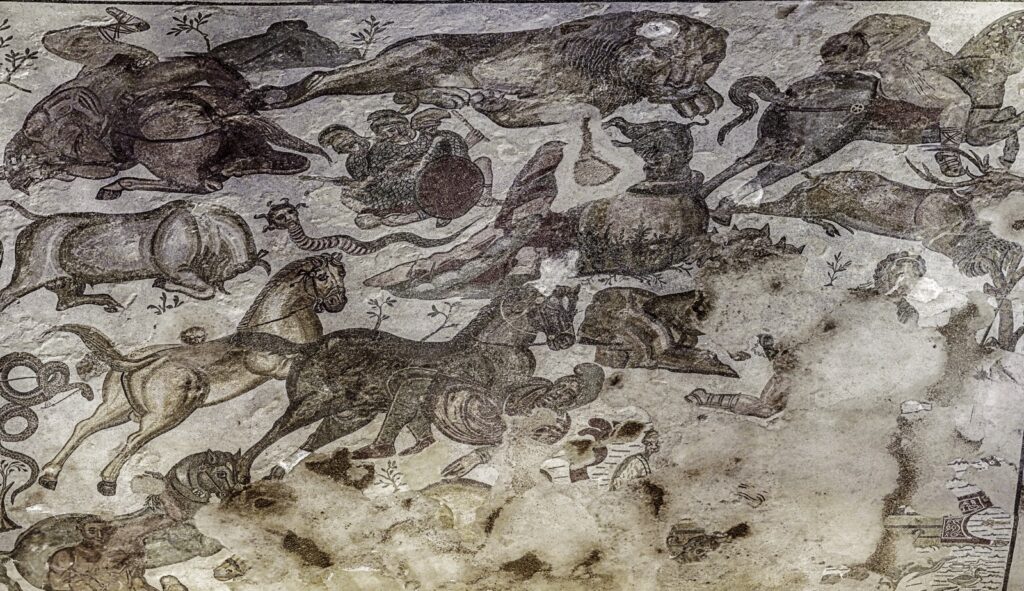Moving through the rooms of the late antiquity residence is like going on a journey that, through the realistic 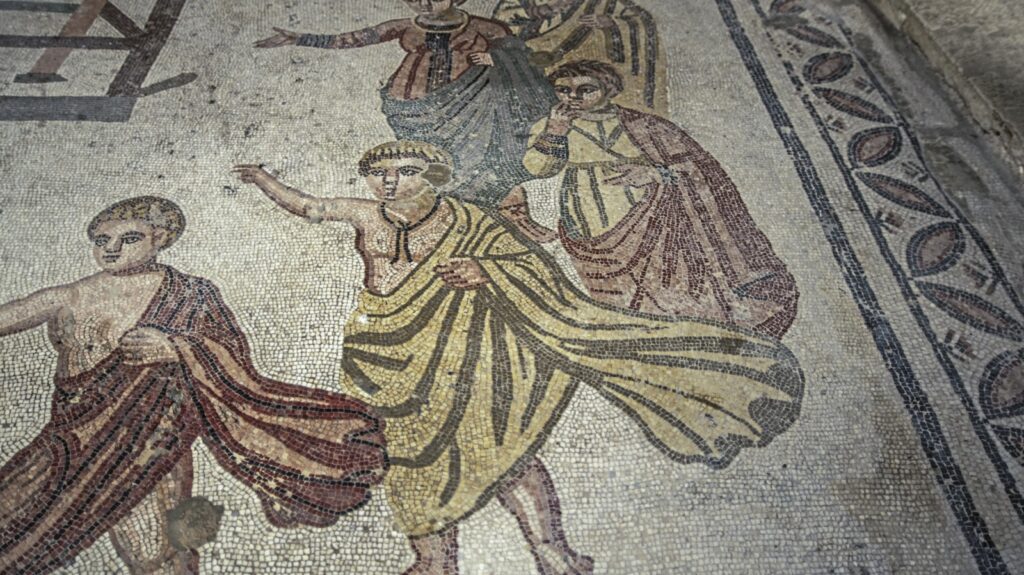 or mythical
or mythical 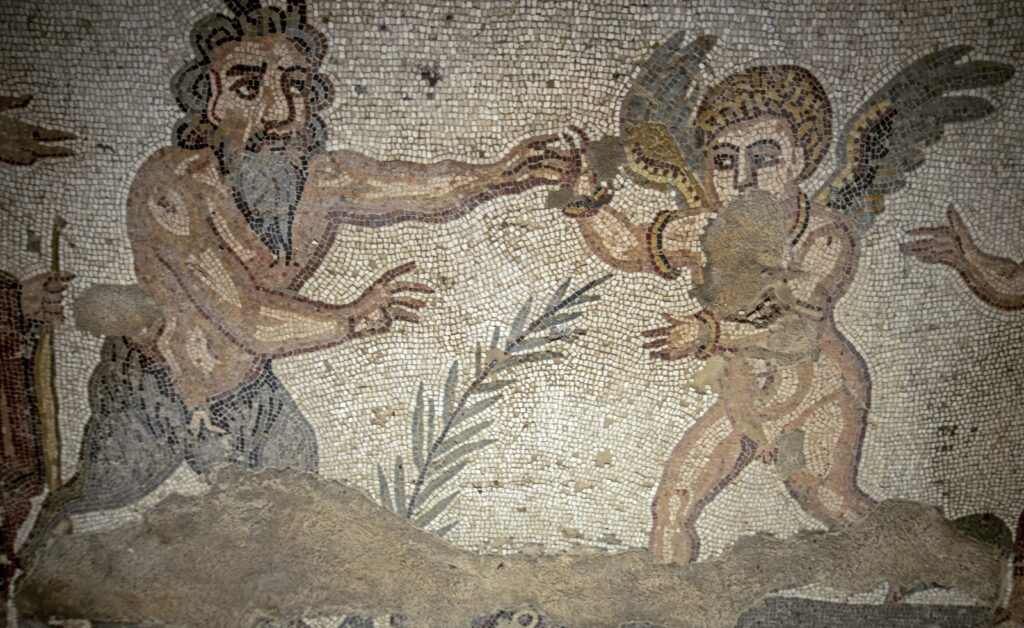 protagonist figures of the mosaics, tackles the theme of
virtus
protagonist figures of the mosaics, tackles the theme of
virtus
.
Mythology and reality intertwine to represent the manifestation of power and culture of a figure who has left nothing to chance but has wanted, rather, to relate some spaces with subjects that became a symbol of his power and values.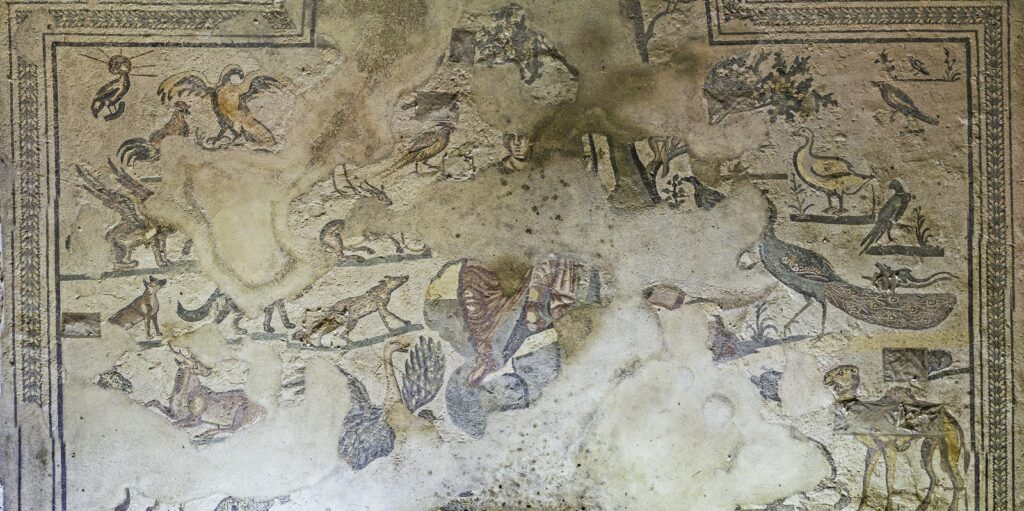 This is how the corridor of the “great hunt” is transformed into a visual representation of the use of cunning
This is how the corridor of the “great hunt” is transformed into a visual representation of the use of cunning 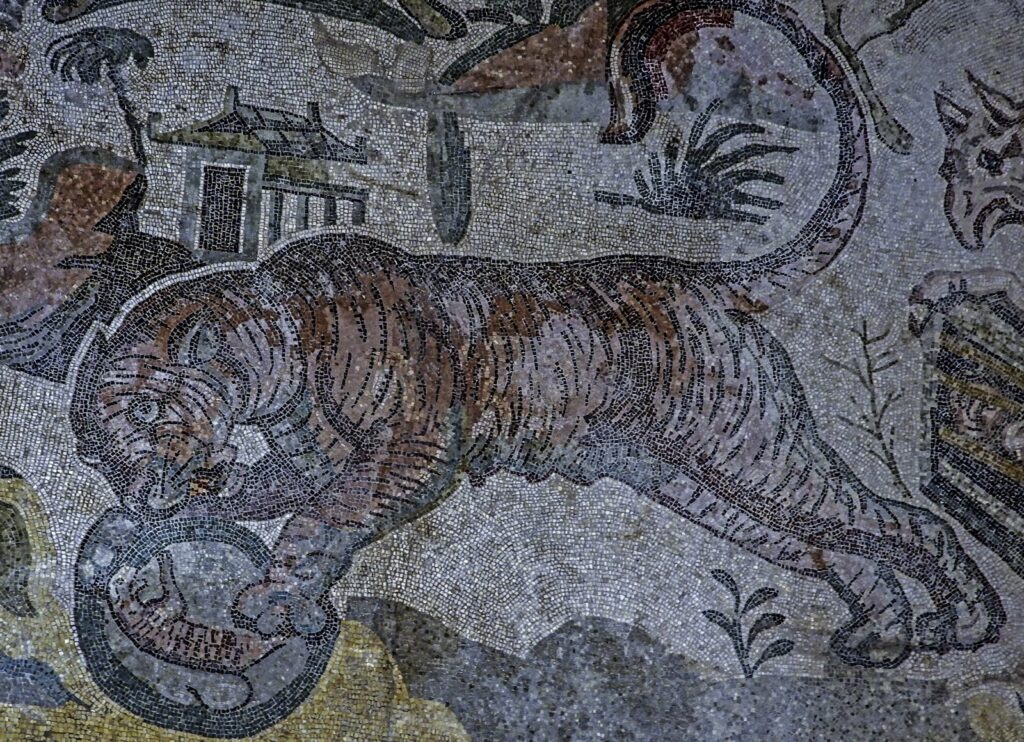 used to capture exotic animals destined for the
Circus Maximus
used to capture exotic animals destined for the
Circus Maximus
, while the subject of the room of the “small hunt”, which is linked to the animal figures
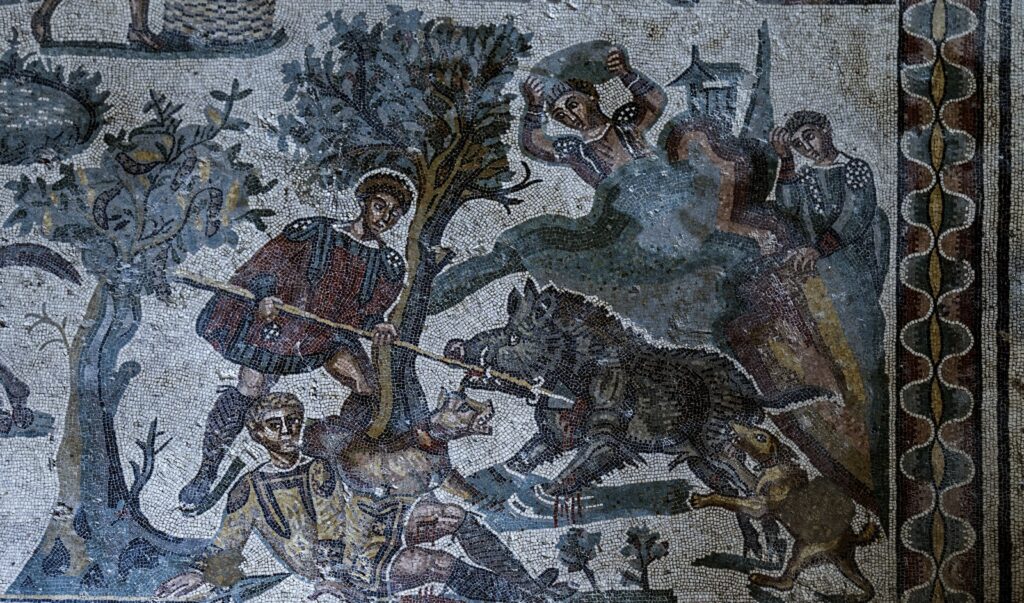 of the
peristyle
of the
peristyle
and the
ovoid peristyle
, represents victory over land animals through the use of force.
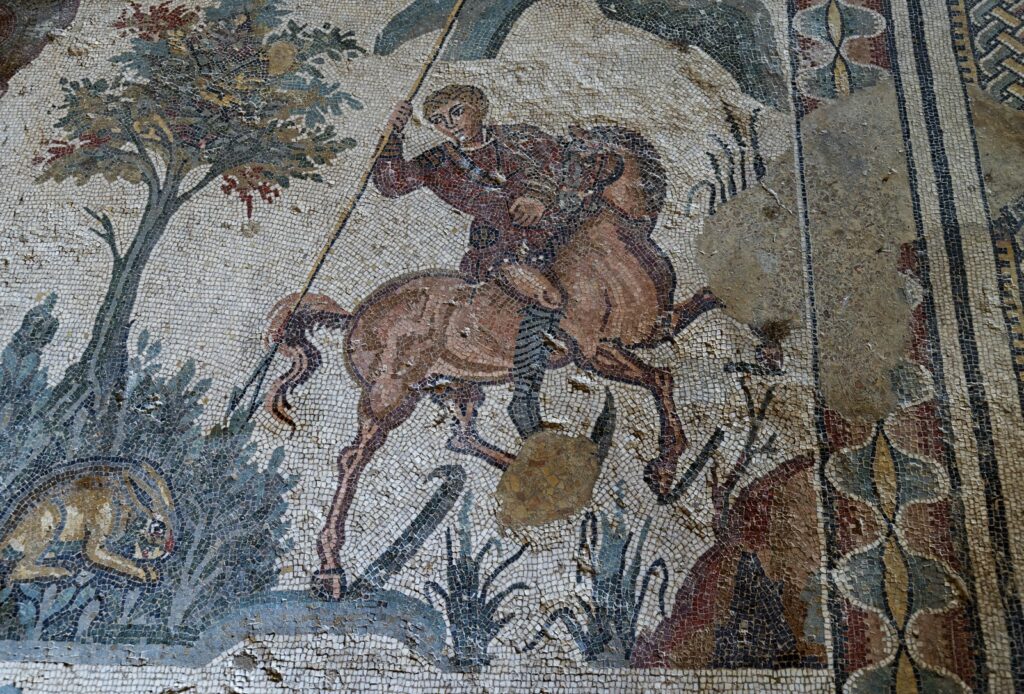 The concept of virtus still linked to cunning is present in the antechamber of the
alcoved cubiculum
The concept of virtus still linked to cunning is present in the antechamber of the
alcoved cubiculum
of the south main apartment that represents the mythical struggle between Eros and Pan.
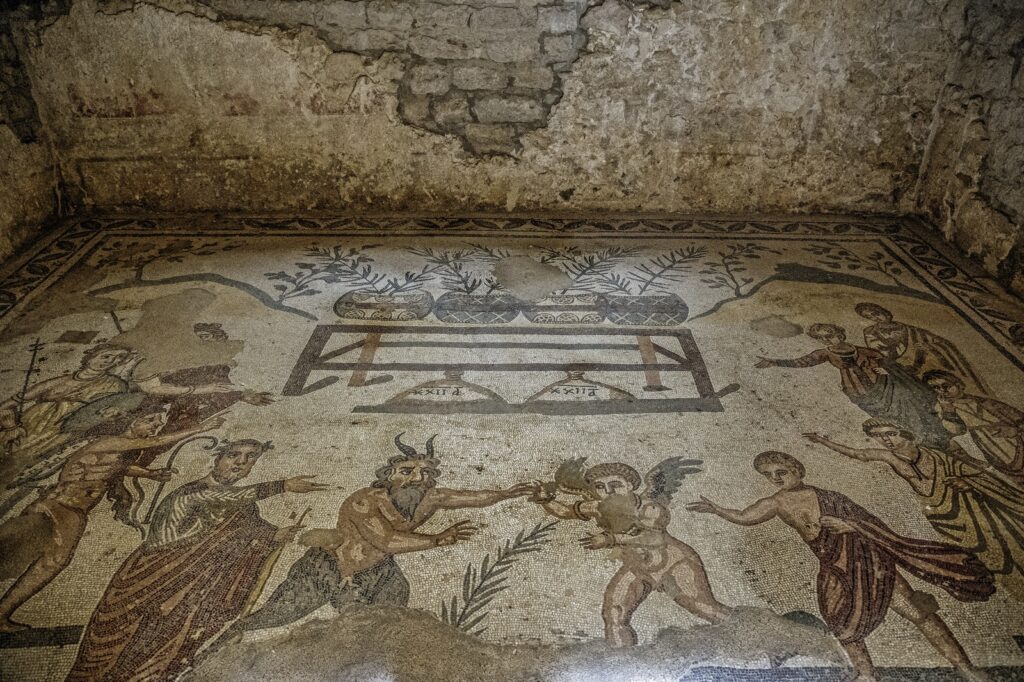 The god of love is victorious, symbolising the superiority of sentiment over the bestial force personified by Pan.
The god of love is victorious, symbolising the superiority of sentiment over the bestial force personified by Pan.
The fight between the two gods therefore evokes a double meaning: the clash and the victory of love over instinct and cunning over brute force. The challenge between Eros and Pan is closely related to the theme of
Ulysses
and
Polyphemus
in the antechamber of the alcoved cubiculum in the north main apartment.
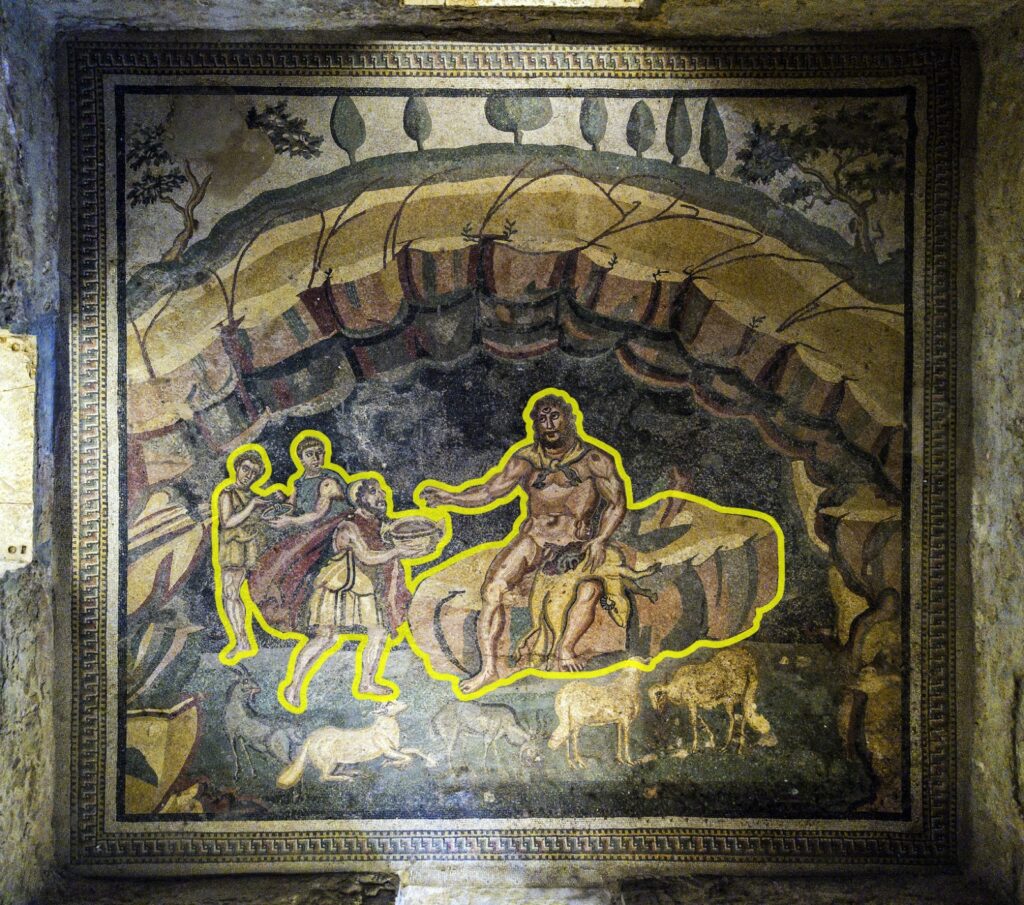
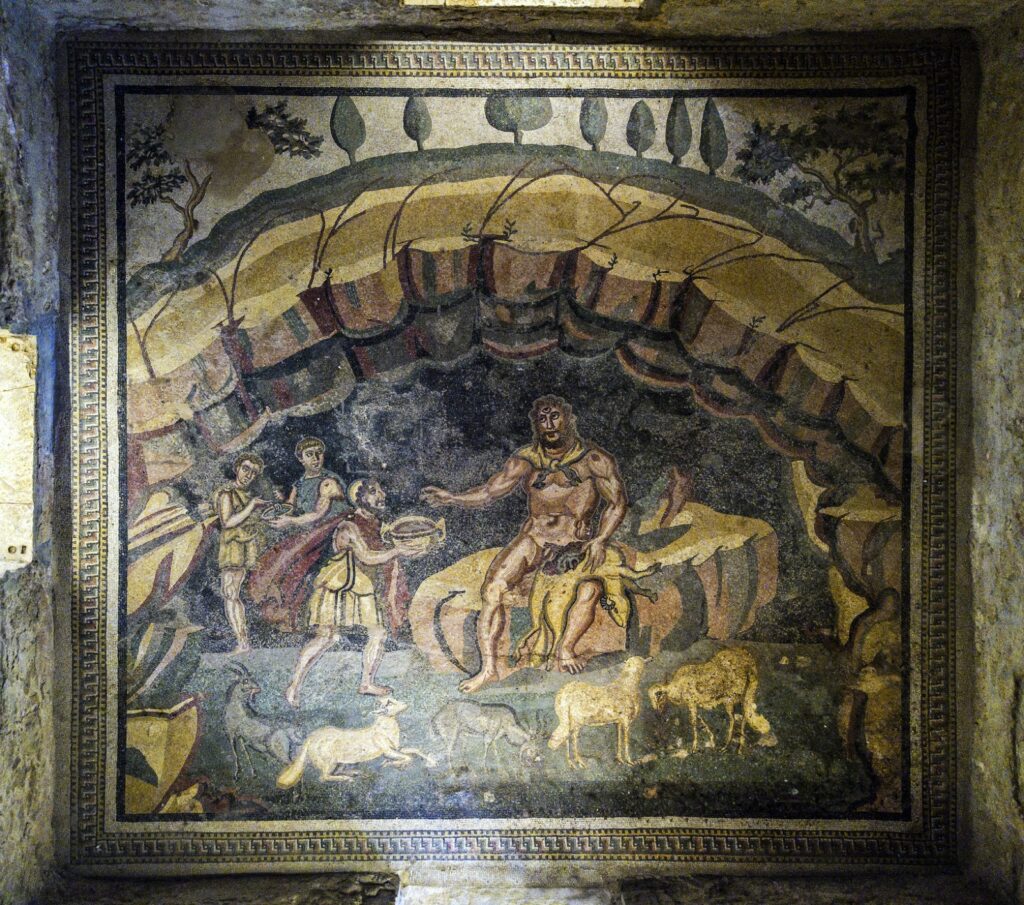
The scene enclosed in the mosaic hides a metaphorical meaning: Ulysses represents human cunning that overwhelms the bestiality of the monster Polyphemus, who cannot moderate his greed, thus marking his downfall. These examples are joined by the depictions, once again linked to the myth of
Orpheus
and
Arion
, who took victory over the animals of the land and sea thanks to the sweet sound of music, knowledge of which was linked to wisdom.
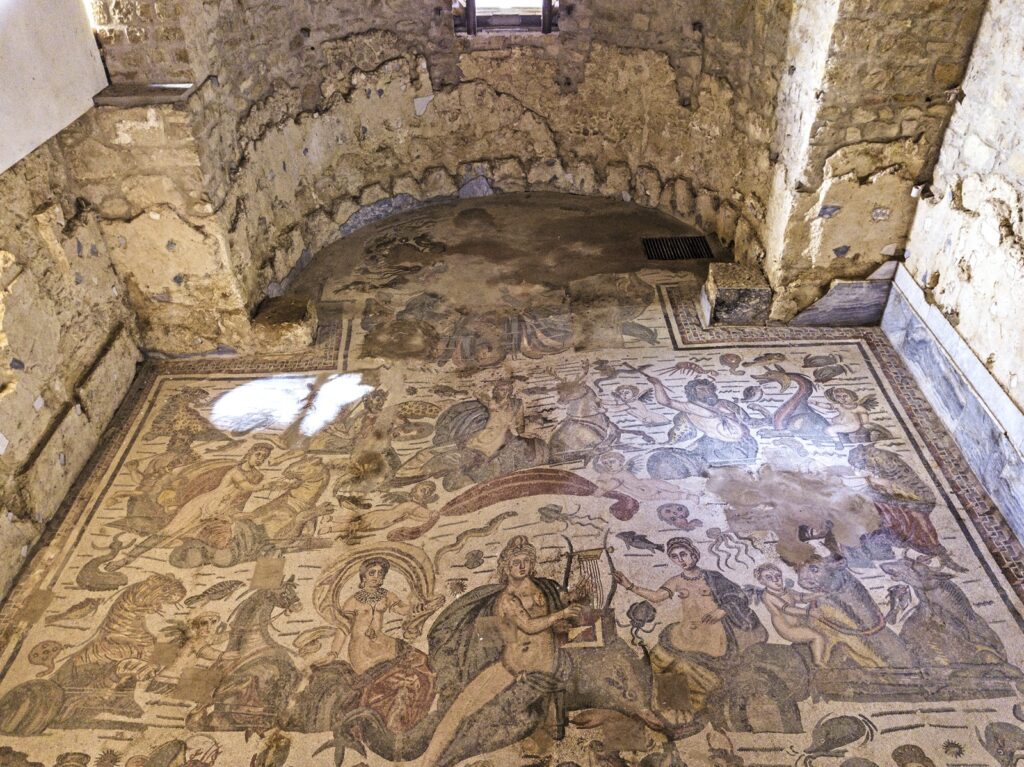 The mosaic of the
triapsidal triclinium
The mosaic of the
triapsidal triclinium
represents humankind’s victory over its passions through the figure of
Hercules
, who defeats beasts and monsters.
